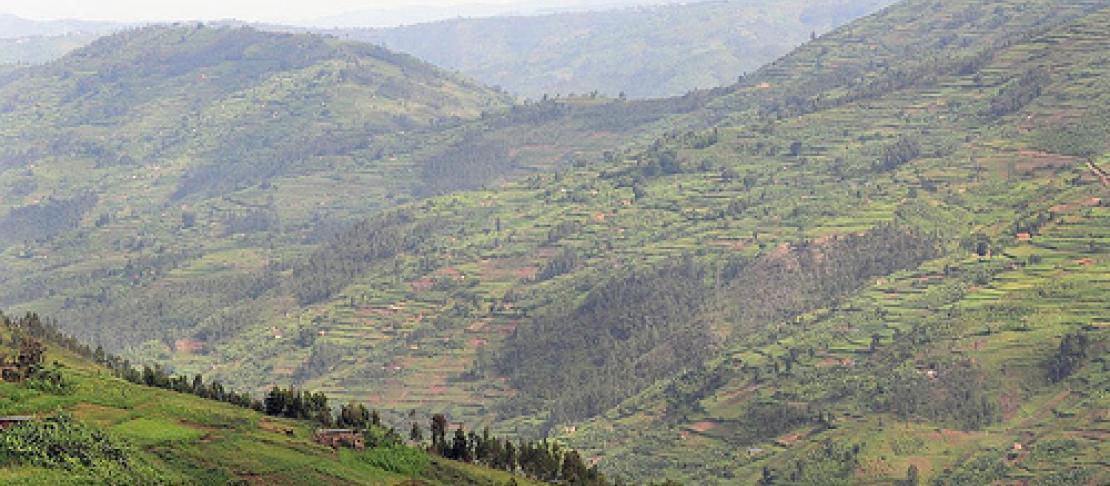The ups and downs of climate change adaptation in agriculture

Written by Chase Sova
Putting agriculture in the climate change agenda has raised a number of important issues such as threats of trade barriers, diversion of REDD+ funds to agriculture, how to deal with its cross-cutting and complex nature, and the links between agricultural mitigation and adaptation. Many of these issues have already become central talking points in UNFCCC negotiations (read David Howlett’s related analysis on “Political Economy and Food Security” for more information). However, it is worth remembering that these issues have much broader relevance to the ability to produce feasible adaptation and mitigation solutions in agriculture.
Irrespective of where we are in the process of embedding agriculture into efforts to fight climate change (be it at the negotiating table in Durban or a subsistence farming community in Western Kenya), we must address issues of scalability, the adaptation-mitigation interface, equity in carbon payments, and agriculture’s cross-sectoral nature, in order to ensure climate measures are most effective.
This post looks more closely at one of these issues; namely scalability, or a system's capacity to adapt to changes in size and complexity.
Three dimensions of scale
Challenges of scale are hardly a new topic, but they have recently taken on renewed relevancy in climate change in agriculture. They affect our ability to scale out (horizontal) and scale-up/down (vertical) policies and management strategies, and our ability to do these things over distinct time periods (temporal).
The horizontal scaling of adaptation interventions (i.e. the transfer of climate interventions between sites) is complicated by agriculture’s site- specific nature. Distinct growing seasons, soil composition, management practices, and cultural norms limit the potential for the widespread adoption of standardized adaptation strategies. These challenges are compounded by uncertainties with respect to how these already unique agro climatic zones will change, increasing the risk of maladaptation if interventions are widely adopted.
Likewise, the vertical scaling of climate change adaptation is quite often problematic. This has implications for the delivery of adaptation funds, but is also relevant to the discussion of national adaptation planning. At the macro scale (international, regional and national) concepts like climate change adaptation, mitigation, food security and other key issues are addressed separately from one another in both policy and legislation. While this is an administrative necessity, it contrasts with household level decision making processes. For the latter, these themes converge, and each is addressed in respect to the household’s overall welfare and not in isolation (See Chambwera and Stage below). Addressing the disconnect between the macro level (where climate finance is available) and local level decision making processes is thus an important challenge of vertical scalability.
The temporal scale provides an important third dimension of complexity to climate change adaptation in agriculture. Certain interventions, for example, may contribute to short-term resilience but can lead to maladaptation in the long-term. The construction of water diversion/management infrastructure anticipating increased high-mountain snow melt in Nepal can prove maladaptive for low lands terai farmers once this tendency reverses in to the future, to provide just one example.
The state of knowledge
So, scalability provides us with no shortage of tripping points in agricultural adaptation to climate change. But we are not starting from zero in developing strategies to overcome them. Research on scale is particularly well established in the area of natural resource management (NRM) and strong potential exists to transfer lessons learned between these closely related fields.
Since Garrett Hardin’s 1968 Tragedy of the Commons (and long before, really) academics have been investigating the institutional structures which set the rules for our relationship with the environment around us. Environmental governance, like climate change adaptation, has typically taken a scaled approach to decision-making, with each ‘level’ (i.e. individual, community, national) representing a specific group of actors and interests. Elinor Ostrom (together with Adger and Lovell) is perhaps most widely known for her work in this area, and has been instrumental in establishing a series of ‘design principles’ for local level governance and cross-scale institutions.
Further research in to similar design principles for local level adaptation schemes, together with the strategies for scaling- up/out the findings (or processes) through nested institutional scales is needed in climate change adaptation in agriculture. The established set of National Adaptation Programmes of Action (NAPA) and emerging Local Adaptation Plans of Action (LAPA) provide a strong testing ground to see where we have been successful to this point, and the ways in which we can improve. The findings would provide important advances in our effectiveness in tackling climate change adaptation in agriculture.
Chase Sova is a visiting researcher at the International Center for Tropical Agriculture (CIAT)
Suggested further reading:
Chambwera, M and Stage, J., 2010. Climate change adaptation in developing countries: issues and perspectives for economic analysis. IIED.
Ostrom, E. Governing the Commons: The Evolution of Institutions for Collective Action. New York: Cambridge University Press, 1990. 270 pp
Few, R., Brown, K. and Tompkins, E.L. (2004) Scaling adaptation: climate change response and coastal management in the UK, Tyndall Centre Working Paper 60


